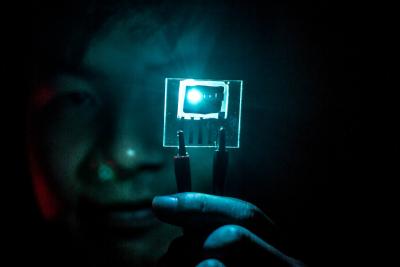Researchers from the University of Michigan developed a new OLED emitter system, based on a blue phosphorescence emitter, based on the polariton-enhanced Purcell effect. This new emitter systems offers high stability and high efficiency.
The basic idea is to start with a light-blue (cyan) phosphorescence emitter (which offers a longer lifetime than a deep blue emitter), and placing it between two mirrors. The distance between the mirrors is controlled so that only deep blue light waves persist and are emitter from the mirror chamber. The researchers also tuned the optical properties of the OLED stack to the adjacent metal electrode which introduced a new quantum mechanical state called a plasmon-exciton-polariton, or PEP. This new state allows the organic material to emit light very fast, thus even further increasing the lifetime by decreasing the opportunity for excited states to collide and destroy the light-emitting material.
This interesting research was funded by the U.S. Department of Energy and Universal Display, which will perhaps commercialize this technology in the future.
Disclaimer: the author of this post holds shares in Universal Display


